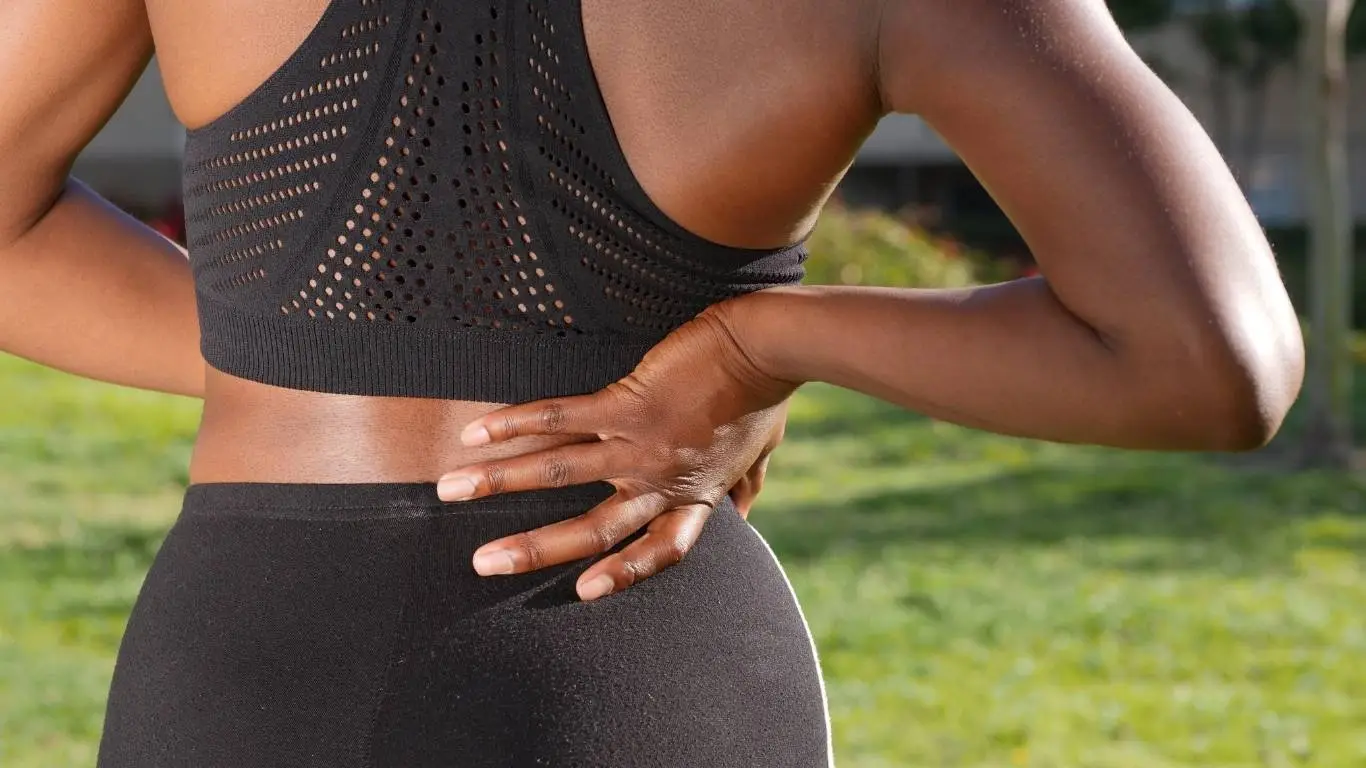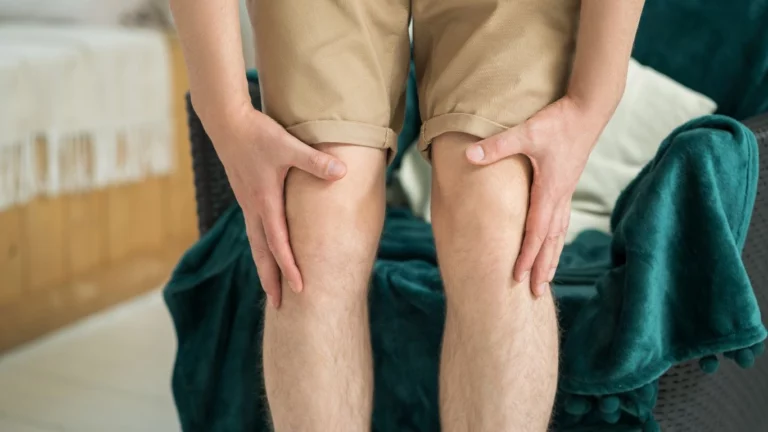Unsafe Gym Moves That Secretly Damage Your Back
Let me be the first to admit it—I’ve made some questionable gym choices in the name of chasing gains. You feel strong, invincible even, until your lower back reminds you who’s boss. I’ve been there, wobbling out of the gym because I went too heavy on the deadlifts or rounded my back during squats. Sound familiar? The gym can be your best friend or worst enemy when it comes to back health, and unfortunately, a lot of us are unknowingly making it worse. Let’s break down some of the most unsafe gym moves for your back and what you should be doing instead.
Why Certain Gym Moves Are a Hidden Danger for Your Spine

Your spine isn’t just a stack of bones—it’s a complex structure supported by muscles, ligaments, discs, and nerves. When you push it beyond its limit, especially with improper form or unsafe moves, you’re basically asking for trouble. Back pain from the gym isn’t just a momentary discomfort—it can stick around, limit your mobility, and affect your everyday life.
The real kicker? Most people don’t even realize the damage is being done until it’s too late. According to research, spinal injuries from gym-related activities are on the rise, particularly among beginners and weekend warriors trying to replicate what they see on social media.
Moves That May Be Wrecking Your Back (Even If They Look Normal)

1. Heavy Barbell Deadlifts with Rounded Back
I love deadlifts, but let me be blunt—they can wreck your back if you don’t nail the form. The moment your lower back starts to round, you’re shifting the load from your glutes and hamstrings to the lumbar spine. That’s a recipe for bulging discs and chronic pain.
Instead: Lower the weight, pull with your hips, and engage your core. Or switch to trap bar deadlifts which are a little more forgiving for back mechanics.
2. Straight-Leg Deadlifts with Locked Knees
This one fooled me for years. I thought keeping my legs locked would stretch my hamstrings better. Nope. It overstressed my lumbar spine and led to weeks of back spasms. That forward hinge with no support is brutal on your discs.
Instead: Slight bend in the knees, controlled movement, and never sacrifice form for weight.
3. Seated Shoulder Press with Excessive Arch
Ever watched someone (maybe even yourself) pressing overhead like they’re trying to bench vertically? The arching back turns a shoulder workout into a lumbar overload session. I’ve tweaked my back this way more times than I’d like to admit.
Instead: Support your spine by keeping your back flush to the bench and engaging your core throughout.
4. Loaded Back Squats with Poor Depth and Control
Squats are a staple, but they’re also a trap. When people go too deep, lose their spine neutrality, or bounce out of the hole, it compresses the lower back in ways that can cause long-term damage.
Instead: Learn proper squat depth for your mobility, maintain a neutral spine, and stop chasing ego lifts.
Cardio Machines That Can Be Just as Harmful

1. Incline Treadmill Walking with Leaning Forward
Have you seen people grabbing the rails and hunching over on an incline? That forward lean causes shearing force on the lower spine and throws your posture out of whack. I used to think I was doing my glutes a favor—turns out, my back was paying the price.
Instead: Keep your posture upright, core tight, and walk hands-free if you can.
2. Stationary Bike with Rounded Posture
Sitting for long hours is already hard on your back, but combine that with bad bike posture and it’s worse. I once aggravated a sciatic flare-up after a week of marathon spin classes. My fault—I was hunched the entire time.
Instead: Adjust the seat and handlebars to promote a neutral spine and avoid slouching.
Common Mistakes That Sneak Into “Safe” Moves

- Holding your breath – This spikes intra-abdominal pressure and can trigger back strain during lifts.
- Ignoring core engagement – A disengaged core means your spine is taking all the load. Recipe for disaster.
- Training through pain – If a move hurts your back, it’s not “just sore.” It’s a warning sign.
- Skipping warmups – Going from zero to barbell is like hitting the freeway at full speed without checking your tires.
Some of the most overlooked causes of gym-induced back pain stem from repetitive poor posture and neglecting spinal alignment. If this sounds like your situation, this deeper guide on how poor posture can lead to chronic back pain is a must-read.
When the Gym Isn’t the Problem—Your Setup Is

I’ll be honest—my gym setup used to be a mess. I had shoes with zero arch support, used worn-down benches, and had no idea how to adjust machines for my frame. Your environment can sabotage your back just as easily as bad form.
- Make sure your footwear is stable and supportive—avoid flat, worn sneakers.
- Adjust machines for your body, not someone else’s.
- Check bench angles and padding before lifting heavy.
Curious about optimizing your form, recovery, and routine? You should definitely explore this foundational guide on exercise rehabilitation and ergonomics for a deeper understanding.
Oh—and if you’re wondering how all this ties into the bigger picture of back pain management, the complete main guide on back pain covers it all—from prevention to advanced treatment options.
Core Mistakes That Lead to Back Trouble in the Gym

Most people think “core” just means abs, but that’s barely scratching the surface. Your core includes deep stabilizers like the transverse abdominis and multifidus—muscles that wrap around your spine like a natural weight belt. The minute you skip training them, your spine starts to bear loads it wasn’t built for.
I used to blast crunches every workout thinking I was bulletproof. Truth is, I was ignoring the muscles that actually protect my back during lifts. Planks, bird-dogs, and dead bugs are boring but they’re the MVPs of spinal stability.
Here’s what to focus on instead:
- Anti-rotation exercises like Pallof presses to strengthen obliques and stabilizers
- Slow tempo work to build control, not just strength
- Mind-to-muscle connection during compound lifts—don’t just “go through the motion”
More on the link between weak glutes and back strain—a common pairing that surprises most gymgoers.
Overtraining Syndrome and Back Breakdown

Let’s talk about the hustle culture for a second. We’ve been told to grind, push past limits, and never skip leg day. But honestly, that mindset cost me a few months of serious lumbar pain. The signs were all there: stiff back every morning, tight hamstrings that wouldn’t loosen up, and a weird fatigue I couldn’t shake.
This wasn’t just soreness—it was my body screaming, “slow down.” Chronic overtraining not only taxes your muscles, it wears down spinal discs and joints. If you don’t balance high-intensity with recovery, inflammation builds, posture suffers, and back pain becomes chronic.
Warning signs you might be overtraining your back:
- Persistent low-grade back pain that worsens with lifting
- Stiffness that doesn’t go away after warmups
- Fatigue despite adequate sleep and nutrition
If you’re nodding your head right now, you may want to read up on recurring back pain after physical activity and how to break that cycle.
Back-Saving Alternatives to Unsafe Gym Moves

I’ve rebuilt my entire training routine with spinal safety in mind, and the difference is night and day. I still train hard, but I no longer fear a wrong move taking me out of action for weeks. Here are some of the safer swaps I’ve personally tested and rely on:
- Replace barbell deadlifts with trap bar deadlifts or kettlebell sumo deadlifts
- Swap back squats for goblet squats or Bulgarian split squats
- Do hip thrusts instead of leg presses if your lower back gets agitated
- Use landmine presses instead of overhead barbell presses for a spine-friendly push
If you’re rebuilding your routine and need a deeper understanding of movements, posture, and mechanics, the guide on conservative treatments for back pain is a good foundational read.
When Pain Persists: Red Flags You Shouldn’t Ignore

Sometimes the pain isn’t just muscular. If you’ve cleaned up your form, reduced volume, and your back still acts up, it could be more than just tightness. I’ve seen lifters push through numbness, radiating pain down the leg, or weird muscle weakness—only to find out it was a herniated disc or nerve impingement.
Do not self-diagnose. See a specialist. Red flags to watch for include:
- Sharp pain radiating down the leg (sciatica alert)
- Numbness or tingling in your feet or glutes
- Sudden loss of strength in your legs during lifts
Check out more on these signs in this article on back pain diagnosis red flags—because waiting too long can cost you more than just gym time.
Recovery Tools Worth Keeping in Your Arsenal

Recovery is where the real gains happen. But more importantly—it’s how you keep your spine healthy long-term. After years of dealing with inflammation flare-ups and post-deadlift tightness, I finally invested in a few tools and techniques that changed everything.
- Foam rollers – Use gently on the upper back, avoid direct pressure on the spine.
- Massage guns – Perfect for the glutes, hamstrings, and thoracic muscles.
- Mobility drills – Thoracic extensions and hip openers help everything stay aligned.
- Hot/cold therapy – Both can ease inflammation and muscle tension post-training.
Also worth exploring: hot vs. cold therapy for back pain and how to apply each one effectively.
Taking Your Back Health Seriously Without Giving Up the Gym

Look, I get it—we love lifting heavy, hitting PRs, and seeing progress. But nothing derails a fitness journey faster than an injury that could’ve been prevented. The good news? You don’t have to give up intensity, just train smarter. Prioritize spinal health, stay humble with the weights, and listen to your body. You’ll lift longer, feel stronger, and avoid the back pain spiral so many gym-goers fall into.
If you’re ready to dig deeper into all aspects of back pain—rehab, prevention, treatments, and more—the complete guide on back pain is where you should head next. It’s packed with expert-backed strategies and guidance that align with everything we’ve covered—and a whole lot more.

Camellia Wulansari is a dedicated Medical Assistant at a local clinic and a passionate health writer at Healthusias.com. With years of hands-on experience in patient care and a deep interest in preventive medicine, she bridges the gap between clinical knowledge and accessible health information. Camellia specializes in writing about digestive health, chronic conditions like GERD and hypertension, respiratory issues, and autoimmune diseases, aiming to empower readers with practical, easy-to-understand insights. When she’s not assisting patients or writing, you’ll find her enjoying quiet mornings with coffee and a medical journal in hand—or jamming to her favorite metal band, Lamb of God.






